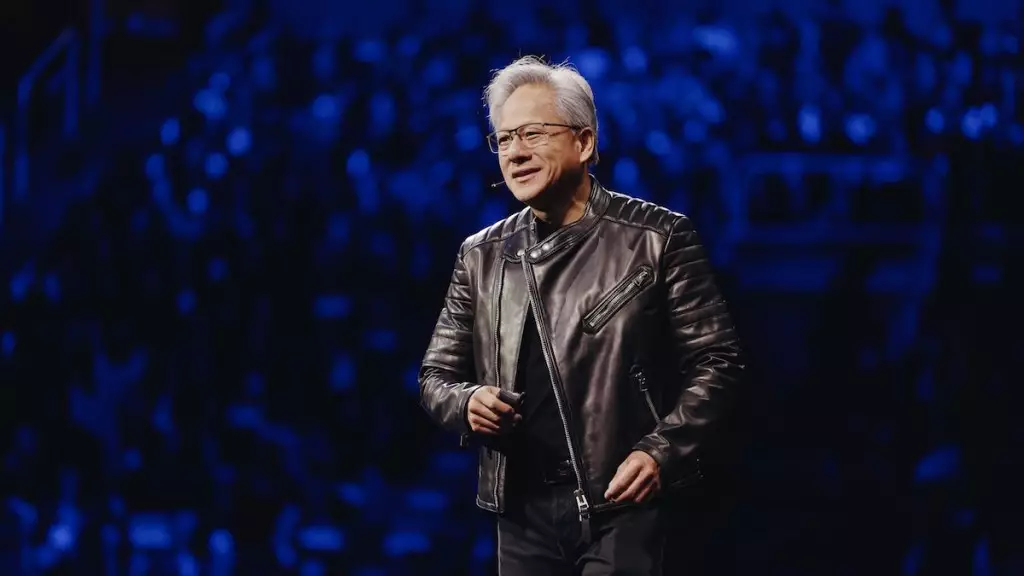The world of artificial intelligence is undergoing a monumental transformation, a shift that NVIDIA’s founder and CEO, Jensen Huang, expressed with fervor during the recent GTC keynote. We are witnessing an unprecedented rush towards deploying billion-parameter models that pave the way for both agentic and physical AI. This demand is not merely a passing trend; it’s a seismic shift as data centers evolve into AI factories, meticulously engineered to process millions of queries with unparalleled speed and efficiency. This emerging landscape represents a colossal $1 trillion marketplace, compelling NVIDIA to unveil groundbreaking updates including the Blackwell Ultra AI platform, which is set to redefine the benchmarks of performance in AI computing.
The adoption of the Blackwell architecture is no minor feat. It claims a staggering 40x performance improvement over its predecessor, Hopper. This leap is not just about raw numbers; it’s about enhancing the capabilities of AI applications, making them more efficient, scalable, and ultimately more impactful. As we approach the second half of 2025, the anticipated release of Blackwell Ultra promises to elevate these standards even further, bringing with it expanded memory configurations to handle increasingly complex AI models.
A New Era of AI-Powered Industries
The ramifications of these technological advancements stretch far beyond raw performance metrics. Huang noted that the integration of AI in robotic applications and various industrial sectors signals a potential $50 trillion opportunity. This prediction underscores the transformative power of AI—it’s not just a tool for efficiency but a catalyst for a paradigm shift across multiple industries, ranging from logistics and healthcare to manufacturing and urban infrastructure. NVIDIA’s Isaac and Cosmos platforms stand at the forefront of these innovations, driving forward the era of AI-infused robotics and automation.
Such automation will not only bring about operational efficiencies but may also redefine workforce dynamics, as machines take on increasingly complex roles traditionally filled by human workers. The ethical implications of this transition are profound, raising questions about employment, accountability, and the societal impact of pervasive AI technologies. It’s imperative that stakeholders approach these changes with foresight, balancing innovation with responsibility.
The Accelerating Pace of AI Development
NVIDIA’s roadmap is not only ambitious; it reflects a commitment to continuous innovation. Following the rollout of the Vera Rubin architecture in 2026, which promises enhanced data transfer speeds critical for sophisticated AI systems, the anticipation of Feynman in 2028 marks a significant stride into integrating next-gen high-bandwidth memory (HBM). This constant evolution in architecture emphasizes a forward-looking strategy that prioritizes adaptability in an industry marked by rapid technological advancements.
Furthermore, initiatives such as the DGX personal AI computers, powered by the NVIDIA Grace Blackwell platform, bring these powerful advancements to individual users. This democratization of technology signifies a critical shift—allowing developers and researchers to train and deploy large models right from their desktops, thus accelerating the pace of innovation across various fields.
Revolutionizing Networking and Storage
Equally noteworthy is the seismic shift in AI infrastructure, where innovations in photonics and optimized storage solutions are poised to redefine energy efficiency and scalability. NVIDIA’s Spectrum-X and Quantum-X networking platforms exemplify this change, with networking switches designed to interconnect massive arrays of GPUs across geographical locales, reducing energy consumption and enhancing speed. The forthcoming launch of these switches indicates a proactive approach to addressing the challenges that face modern AI factories—a necessity given the growing complexities of managing vast arrays of processors.
In addition to hardware innovations, NVIDIA’s commitment to open-source solutions, illustrated by the release of the Dynamo software, promises to streamline the innovation lifecycle within AI factories. This reflects a broader ethos of collaboration in the tech community, where accelerating advancements in multi-step reasoning can yield rich dividends for AI application development.
Shaping the Future with Customizable Models
The development of GR00T N1—a fully customizable foundation model for humanoid robots—demonstrates NVIDIA’s ambition to create versatile AI capable of generalized reasoning. The dual-system approach mimicking human cognitive patterns stands to revolutionize our interactions with robots, embedding them with a degree of nuanced understanding that has previously been aspirational. Furthermore, collaborations with industry leaders like Google DeepMind and Disney Research to create Newton, an open-source physics engine, signify a turning point in how we envision the capabilities of machines in the context of everyday tasks.
As we look ahead, the unfolding AI landscape presents a myriad of opportunities and challenges. NVIDIA’s trajectory suggests not just a race to enhance computational power but a holistic vision of integrated, responsible, and ethical AI that stands to reshape our reality in truly profound ways.


Leave a Reply